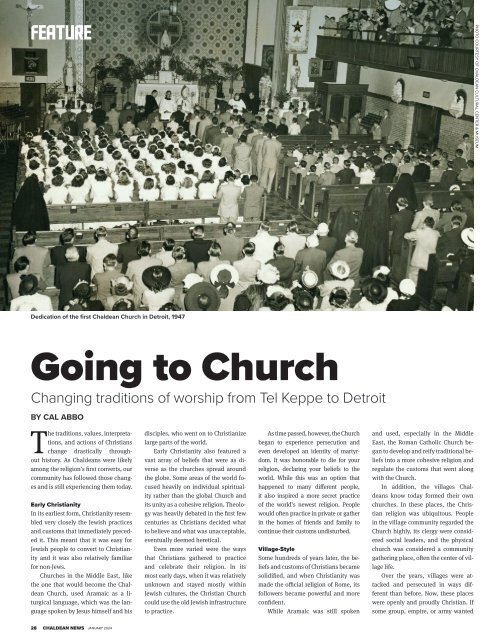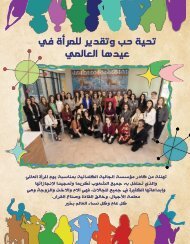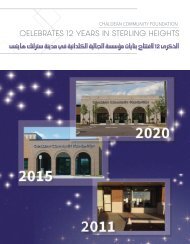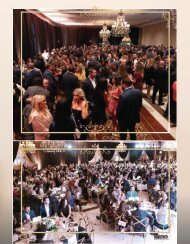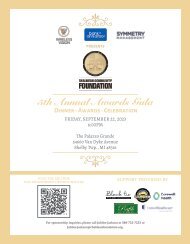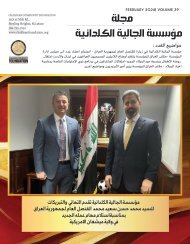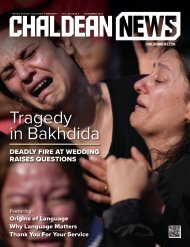You also want an ePaper? Increase the reach of your titles
YUMPU automatically turns print PDFs into web optimized ePapers that Google loves.
FEATURE<br />
PHOTO COURTESY OF CHALDEAN CULTURAL CENTER & MUSEUM<br />
Dedication of the first Chaldean Church in Detroit, 1947<br />
Going to Church<br />
Changing traditions of worship from Tel Keppe to Detroit<br />
BY CAL ABBO<br />
The traditions, values, interpretations,<br />
and actions of Christians<br />
change drastically throughout<br />
history. As Chaldeans were likely<br />
among the religion’s first converts, our<br />
community has followed those changes<br />
and is still experiencing them today.<br />
Early Christianity<br />
In its earliest form, Christianity resembled<br />
very closely the Jewish practices<br />
and customs that immediately preceded<br />
it. This meant that it was easy for<br />
Jewish people to convert to Christianity<br />
and it was also relatively familiar<br />
for non-Jews.<br />
Churches in the Middle East, like<br />
the one that would become the Chaldean<br />
Church, used Aramaic as a liturgical<br />
language, which was the language<br />
spoken by Jesus himself and his<br />
disciples, who went on to Christianize<br />
large parts of the world.<br />
Early Christianity also featured a<br />
vast array of beliefs that were as diverse<br />
as the churches spread around<br />
the globe. Some areas of the world focused<br />
heavily on individual spirituality<br />
rather than the global Church and<br />
its unity as a cohesive religion. Theology<br />
was heavily debated in the first few<br />
centuries as Christians decided what<br />
to believe and what was unacceptable,<br />
eventually deemed heretical.<br />
Even more varied were the ways<br />
that Christians gathered to practice<br />
and celebrate their religion. In its<br />
most early days, when it was relatively<br />
unknown and stayed mostly within<br />
Jewish cultures, the Christian Church<br />
could use the old Jewish infrastructure<br />
to practice.<br />
As time passed, however, the Church<br />
began to experience persecution and<br />
even developed an identity of martyrdom.<br />
It was honorable to die for your<br />
religion, declaring your beliefs to the<br />
world. While this was an option that<br />
happened to many different people,<br />
it also inspired a more secret practice<br />
of the world’s newest religion. People<br />
would often practice in private or gather<br />
in the homes of friends and family to<br />
continue their customs undisturbed.<br />
Village-Style<br />
Some hundreds of years later, the beliefs<br />
and customs of Christians became<br />
solidified, and when Christianity was<br />
made the official religion of Rome, its<br />
followers became powerful and more<br />
confident.<br />
While Aramaic was still spoken<br />
and used, especially in the Middle<br />
East, the Roman Catholic Church began<br />
to develop and reify traditional beliefs<br />
into a more cohesive religion and<br />
regulate the customs that went along<br />
with the Church.<br />
In addition, the villages Chaldeans<br />
know today formed their own<br />
churches. In these places, the Christian<br />
religion was ubiquitous. People<br />
in the village community regarded the<br />
Church highly, its clergy were considered<br />
social leaders, and the physical<br />
church was considered a community<br />
gathering place, often the center of village<br />
life.<br />
Over the years, villages were attacked<br />
and persecuted in ways different<br />
than before. Now, these places<br />
were openly and proudly Christian. If<br />
some group, empire, or army wanted<br />
28 CHALDEAN NEWS <strong>JANUARY</strong> <strong>2024</strong>


